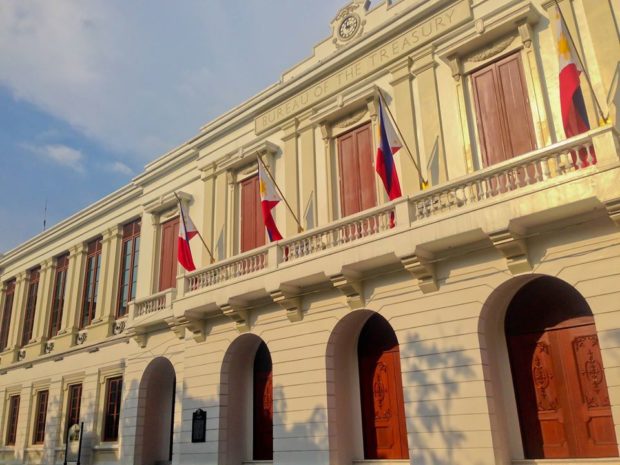The government’s reliance on local borrowing further increased the amount of treasury bills and bonds outstanding to a new high of 7.38 trillion pesos in May.
The latest data from the Treasury Office showed that the stock of treasury bills issued by the national government rose to 1.070 billion pesos at the end of last month, from 1.6 trillion pesos in April. The stock of T bonds also rose to 6.31 trillion pesos from 6.21 billion pesos a month ago.
Since April, the Treasury has increased its monthly domestic borrowing program. This month, the Treasury scheduled the auction of 215 billion pesos of bills and bonds, more than 170 billion pesos each in April and May. The Treasury has also increased the frequency of its bond auctions to weekly from twice a week in the past. National Treasurer Rosalia de Leon said this month’s Treasury bond auctions are aimed at investors whose bond holdings have matured. No less than 165 billion pesos of government securities, including 131 billion pesos in retail treasury bills (RTB), were repaid and reinjected into the national financial system this month.
At the end of May, the outstanding 91-day benchmark Treasury bills stood at 134 billion pesos; 182 days, 226.4 billion pesos and 364 days, 709.4 billion pesos. Meanwhile, treasury bills in circulation in the same month included 252.5 billion pesos of three-year bonds; 401.8 billion pesos, over five years; Seven-year pesos 563.1 billion and 10-year bonds pesos 719.6 billion.
The 10-year land reform bond outstanding was 7.9 billion pesos; 420.3 billion pesos in 20 years; and 235.9 billion pesos in 25-year bonds. As for the nominal Philippine bond of 6.582 million dollars redenominated in 28.5 years, the outstanding amount remained at 97.1 million pesos.
The 2,59 trillion pesos in RTB were also remarkable; P1.03 trillion benchmark bonds; 50 billion pesos in 25-year bonds from the Central Bank and the Board of Liquidators; 23.9 billion pesos in onshore treasury bills in dollars; and 6.6 billion pesos in one-year “Premyo†bonds.
The government had scheduled to borrow up to 3.1 trillion pesos this year, most of which around 2.6 trillion pesos will come from the domestic debt market through the sale of treasury bills and of bonds. This involves taking advantage of market liquidity and minimizing the country’s exposure to currency risks. Finance Secretary Carlos Dominguez III said this week that the Philippines’ debt-to-gross domestic product ratio – a measure rating agencies watch because it reflects an economy’s ability to settle its obligations – would rise further to 58 , 7% by the end of the year, against 54.6%. percent last year and the all-time low of 39.6 percent in 2019.
In the first quarter, the debt ratio peaked at 60.4% in 16 years, already surpassing what debt watchers considered the manageable 60% public debt threshold, not thanks to the recession prolonged that spilled over into the first quarter of this year. .
At the end of April, the national government debt stock reached a new record high of 10.99 billion pesos. INQ
Read more
Subscribe to INQUIRER PLUS to access The Philippine Daily Inquirer and over 70 other titles, share up to 5 gadgets, listen to the news, download from 4 a.m. and share articles on social media. Call 896 6000.
For comments, complaints or inquiries, contact us.




